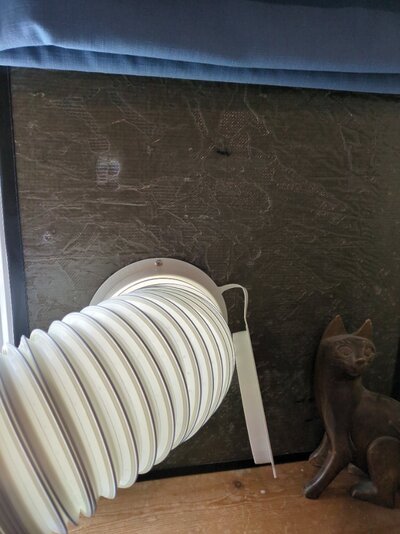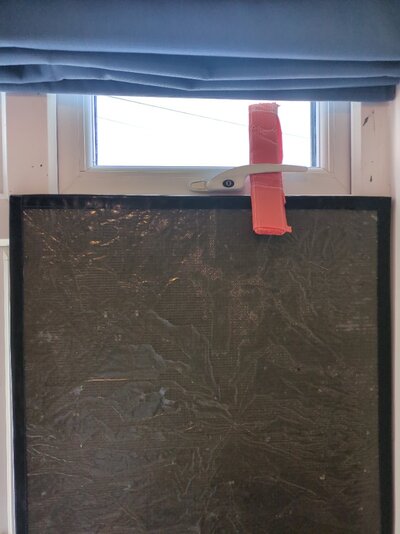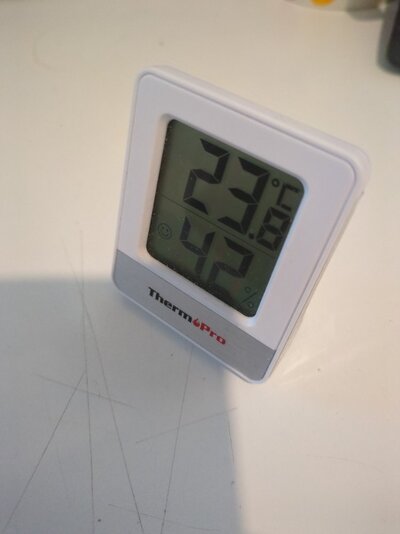Looks like quite an impedance mismatch going on there!!and made up the joint in the loft. in a dry location and completely accessible jelly crimps are totally acceptable.
You are using an out of date browser. It may not display this or other websites correctly.
You should upgrade or use an alternative browser.
You should upgrade or use an alternative browser.
Stuff you have fixed today
- Thread starter qwakers
- Start date
Network cables rely on a well defined twisted pair structure (by insulation type and thickenss, and twist pitch) to provide a characteristic 100 Ohm impedance, and immunity from crosstalk and interference. Both of those characteristics are compromised in the join that's visible in the images above. A better method of joining would be to terminate both ends of the cable with Ethernet jacks, and using an Ethernet joiner/coupler.how d'ya figure?
See e.g: https://www.cablinginstall.com/conn...g-parameters-affect-your-networks-performance
Dev
8th generation, Weyland type
- Messages
- 1,384
that link does not support your assertion.
dexgreen gel filled crimps are widely used for data connections. Using 2 RJ45 plugs and a coupler is a bad idea, in my opinion. But as The Dude says, that’s just, like, my opinion man.
dexgreen gel filled crimps are widely used for data connections. Using 2 RJ45 plugs and a coupler is a bad idea, in my opinion. But as The Dude says, that’s just, like, my opinion man.
qwakers
Member
- Messages
- 2,642
- Location
- cornwall, united kingdom
indeed. i have made thousands of connections with jelly crimps, and like the link you posted states, if you connect it with a idc correctly (like with jelly crimps) it works fine..
bear in mind my day job is dealing with exactly this type of issue.
i fail to see how making multiple connections by crimping a plug on (the same type of connection ie idc) to then use a joiner (2 more resistive connections) then another plug, would not introduce MORE resistance than just 1 joint (again, using the same type of connection, one designed for exactly this application)
but hey, im only a telecoms engineer by trade, what do i know?
bear in mind my day job is dealing with exactly this type of issue.
i fail to see how making multiple connections by crimping a plug on (the same type of connection ie idc) to then use a joiner (2 more resistive connections) then another plug, would not introduce MORE resistance than just 1 joint (again, using the same type of connection, one designed for exactly this application)
but hey, im only a telecoms engineer by trade, what do i know?
CAT 5/6 is pretty robust and will cope with a surprising amount of bodging. I've been part of a few design reviews where we had to run unmatched traces over short distances (relative to the 100m odd total length).
Nonetheless, voipio is right. IDC or not isn't the issue, along with cable resistance, solder joints or any of that. Ay higher frequencies, what matters is the capacitance and inductance, and the ratio between them. Simplifying, the inductance comes from the wire and the capacitance comes from the distance between the wires and the material between, in the wire itself and a proper connector this is designed to all be the same. Where it isn't, like jelly crimps and with random distance between the wires making up each pair, you'll get some of the signal reflected back rather than transmitted.
But, a lot of work has been done in the integrated circuits to make cat 5/6 robust to some very uncontrolled wiring, so cat 5 will almost certainly work and cat 6 probably will
Nonetheless, voipio is right. IDC or not isn't the issue, along with cable resistance, solder joints or any of that. Ay higher frequencies, what matters is the capacitance and inductance, and the ratio between them. Simplifying, the inductance comes from the wire and the capacitance comes from the distance between the wires and the material between, in the wire itself and a proper connector this is designed to all be the same. Where it isn't, like jelly crimps and with random distance between the wires making up each pair, you'll get some of the signal reflected back rather than transmitted.
But, a lot of work has been done in the integrated circuits to make cat 5/6 robust to some very uncontrolled wiring, so cat 5 will almost certainly work and cat 6 probably will
Amidst a multitude of carb jobs I had the pleasure to work on this over last couple of days, a 12,000 mile service plus tyres and anything it needs just do it.
Not really a fan of the modern sports bikes but blooming heck this thing is an absolute beast, but surprisingly forgiving throttle response even in Race mode.
Quick Shift is absolutely seemless as well.
Think this is the 3rd Generation S1000RR and they keep getting better!.
Really well sorted road bike, was genuinely impressed.

Not really a fan of the modern sports bikes but blooming heck this thing is an absolute beast, but surprisingly forgiving throttle response even in Race mode.
Quick Shift is absolutely seemless as well.
Think this is the 3rd Generation S1000RR and they keep getting better!.
Really well sorted road bike, was genuinely impressed.
Think I would have moved housemany years ago, when I built the garage, I ran Ethernet out to give me Wi-Fi out there. its been working fine til recently.
now it isn't.
I had to extend the wires because I was stupid and cut them too short, the connectors are waterproof but obviously it wasn't a good long term solution.
so i fixed it...
and in doing so gave myself a lot of work refinishing my toilet...
dug up the splice

pulled new wire through the conduit.

then up through the bathroom wall


replaced the plasterboard



and by the front door as i now had a offcut to use

and made up the joint in the loft. in a dry location and completely accessible jelly crimps are totally acceptable.



"conduit" replaced (its data, proper conduit is tiny, hard to pull through and expensive by comparison, this works... gimme a break)


Dev
8th generation, Weyland type
- Messages
- 1,384
Can you link a source or ISO standard for what ‘proper connector’ you mean?the inductance comes from the wire and the capacitance comes from the distance between the wires and the material between, in the wire itself and a proper connector this is designed to all be the same. Where it isn't, like jelly crimps and with random distance between the wires making up each pair, you'll get some of the signal reflected back rather than transmitted.
Blue Chips
Forum Supporter
- Messages
- 751
- Location
- Maine, USA
My neighbor gave me his old Echo CS-4500 chainsaw the other day. He said it ran fine, but the starter cord didn't recoil properly. A quick fix, or so I thought, until I took a closer look at it. This turned out to be one of those "as long as I've fixed that, I might as well fix this" projects. I found quite a few issues, but the compression was still like new, and I like Echo products, so I thought I’d do it right. I even ordered a new “ECHO” label. I found some good used parts, which saved some cash, but I still spent well over 100 bucks, which included a new Oregon sprocket, clutch drum, bearing, bar, and chain. The saw runs great now, starts right away, idles and runs smoothly, and the automatic and manual chain oilers work fine. It even looks halfway decent, so I guess I won't complain.
Here's what I did:
- Starter cord frayed (replaced)
- Starter cord guide chipped (replaced)
- Phenolic side plate for starter spring worn (replaced)
- Thumb-operated manual chain oiler broken (replaced)
- Outer chain guide plate missing (replaced)
- Spike missing (replaced)
- Rim-type sprocket, w/bearing & drum worn (replaced with new Oregon part)
- 18” Bar usable but worn (replaced with new Oregon part)
- Chain usable but worn (replaced with new Oregon part)
- Clutch cover casting usable but broken (replaced)
- Main Echo logo label torn (replaced)
- Starter cover mounting screw missing (replaced)
- Air filter dirty (cleaned)
- Chain catcher damaged (replaced)
- Grounding wire (shut-off wire) frayed (repaired)
- Carburetor (cleaned)
Chainsaw after some deconstruction and cleaning:

Chainsaw after repairs:


I now own five chainsaws, but you can’t have too many, right?
Here's what I did:
- Starter cord frayed (replaced)
- Starter cord guide chipped (replaced)
- Phenolic side plate for starter spring worn (replaced)
- Thumb-operated manual chain oiler broken (replaced)
- Outer chain guide plate missing (replaced)
- Spike missing (replaced)
- Rim-type sprocket, w/bearing & drum worn (replaced with new Oregon part)
- 18” Bar usable but worn (replaced with new Oregon part)
- Chain usable but worn (replaced with new Oregon part)
- Clutch cover casting usable but broken (replaced)
- Main Echo logo label torn (replaced)
- Starter cover mounting screw missing (replaced)
- Air filter dirty (cleaned)
- Chain catcher damaged (replaced)
- Grounding wire (shut-off wire) frayed (repaired)
- Carburetor (cleaned)
Chainsaw after some deconstruction and cleaning:
Chainsaw after repairs:
I now own five chainsaws, but you can’t have too many, right?
No single proper connector, but anything with an impedance of between 85-115ohms at 100-250MHz. Have a look up of impedance matching and if want a lot of detail and a very interesting book, a handbook of black magic, high speed digital design, and if you run the numbers, you can see why a small mismatch will be ok but it does degrade the signal at some pointCan you link a source or ISO standard for what ‘proper connector’ you mean?
Nah, wrong thing. If you're in telecoms, maybe return loss is what you're familiar with? This gives a measure of what fraction of the signal is reflected back by discontinuities in the transmission line impedance. Anyway, I'll leave you to it
Pigeon_Droppings2
Member
- Messages
- 6,691
- Location
- london
I couldn't decide which post this should go it....I made it...out of a free board I scrounged!
Coated my free scrounged tile backer board in epoxy and fiberglass. I then cut a hole in it to make a window outlet for my aircon.
I have to say...the tile backer board was really good...basically zero heat transfer and the room is south facing.
Found some spare foil insulation and stuck it on the outside...came out quite the pro job I think....very unlike me
Coated my free scrounged tile backer board in epoxy and fiberglass. I then cut a hole in it to make a window outlet for my aircon.
I have to say...the tile backer board was really good...basically zero heat transfer and the room is south facing.
Found some spare foil insulation and stuck it on the outside...came out quite the pro job I think....very unlike me

Last edited:
Pigeon_Droppings2
Member
- Messages
- 6,691
- Location
- london
The reverse side...pretty pleased with this. The rough surface was caused by me covering it with an old bag and then adding a ply board and weights as it needed to be kept flat while it cured.
Today it's 30c+ outside and there's very little heat soak coming through the board.
Today it's 30c+ outside and there's very little heat soak coming through the board.
Do you have access to the hot side air inlet? The hot air being blown out has to come from somewhere, and probably at 30 degC plus, which also has to be cooled, causing a huge reduction to the overall cooling efficiency. On a day like this, a 12,000BTUh unit may only be producing an effective cooling of 4,000BTUh. I'm in the process of channeling the hot side air input via a second hose to the outside.The reverse side...pretty pleased with this. The rough surface was caused by me covering it with an old bag and then adding a ply board and weights as it needed to be kept flat while it cured.
Today it's 30c+ outside and there's very little heat soak coming through the board.
Pigeon_Droppings2
Member
- Messages
- 6,691
- Location
- london
My old machine had x2 ports...new one takes the hot side from the room which is very annoying as it's creating a negative pressure in the room effectively.I'm in the process of channeling the hot side air input via a second hose to the outside.
I'm just using it to knock the temp down in my office when I'm working...i leave my office door open and have the AC set very low and set to 24....it's effective but not efficient!
Quite impressed how quiet the new machines are....my old one had to be switched off for calls.
For context it's currently 32C in London...and usually that would mean 35C in my office with all the heat from computers etc.
The_Yellow_Ardvark
https://www.death-clock.org/
- Messages
- 20,101
- Location
- Going Away.
Nice old childs toy lawn mower.
Eg a smaller than the grown up version.
Simple drive.
getting this far showed there was, in fact 2 shades of green paint. Matching them showed they are still used on the MG range. Digging on the net showed they were an Austin shade.
Under the green was a blue. I did not like it, so we went green.
Soaking the oak rollers in linseed oil.
They went gluck gluck. But the cracks closed.
Starting the rebuild.
Blades backed lap to give a good edge.
All done, working.
But it needs tweaking a bit.
qwakers
Member
- Messages
- 2,642
- Location
- cornwall, united kingdom
All finished.many years ago, when I built the garage, I ran Ethernet out to give me Wi-Fi out there. its been working fine til recently.
now it isn't.
I had to extend the wires because I was stupid and cut them too short, the connectors are waterproof but obviously it wasn't a good long term solution.
so i fixed it...
and in doing so gave myself a lot of work refinishing my toilet...
dug up the splice

pulled new wire through the conduit.

then up through the bathroom wall


replaced the plasterboard



and by the front door as i now had a offcut to use

and made up the joint in the loft. in a dry location and completely accessible jelly crimps are totally acceptable.



"conduit" replaced (its data, proper conduit is tiny, hard to pull through and expensive by comparison, this works... gimme a break)

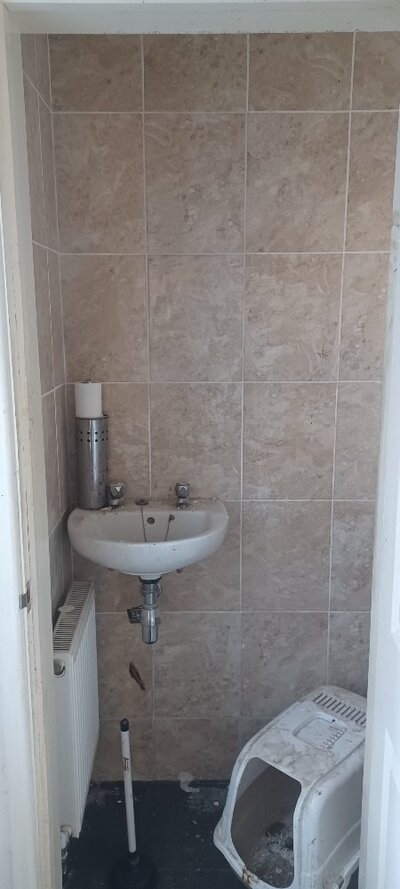
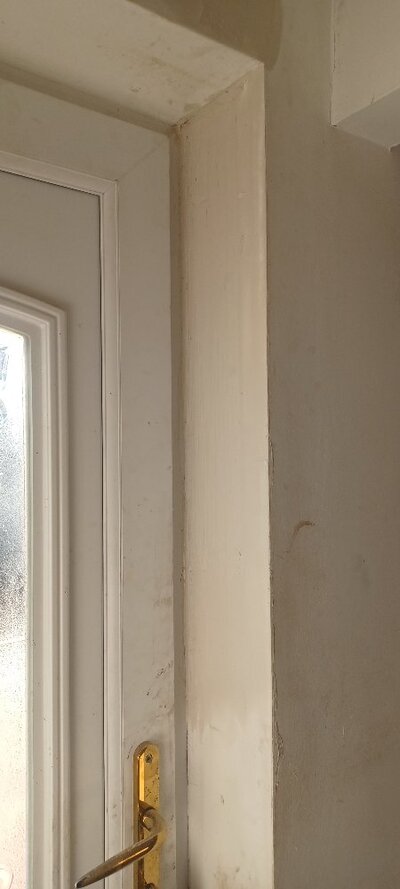
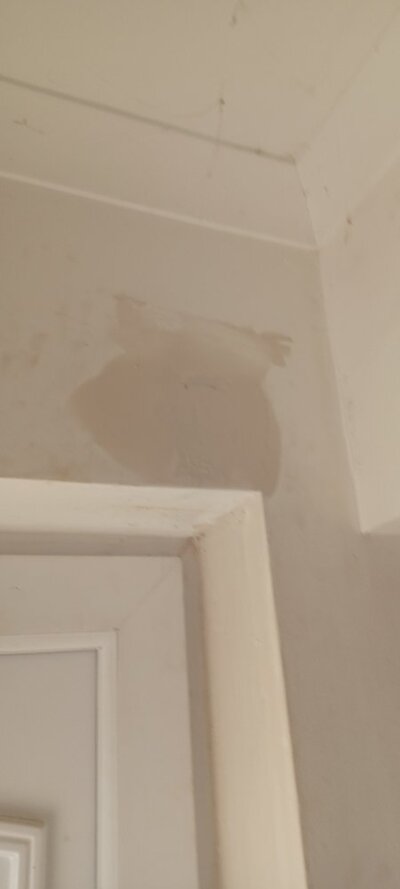
And for the record, it works fine. And my tester shows the same atten as a virgin cable of roughly the same length.


